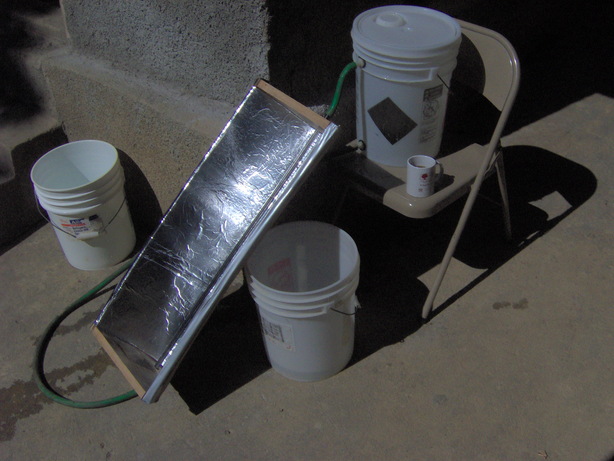
The system he wanted to put in (by Living Waters for the World) was not the system that Christian Flights International wanted to put in (the McGuire water purification system), however, so he agreed to come and put in their system.
It became apparent to me, however, that CFI was focused on treating the water for those living on the campus, and those groups visiting the campus -- not the community, and not even for the students. I have to admit that this peeved me, and I set out on a quest to find a way to treat water for our students.
There were several suggestions that looked promising:

Now here's an activity that shows how heat treatment results in a "dilution" of nasty creatures. It's an example of exponential decay (which is the flip side of exponential growth). If you plot the curves that result, you'll know what I mean!
Keywords: exponential decay, discrete dynamical system
Overview:
The chart below indicates the temperatures at which the most common waterborne pathogens are rapidly killed, thus resulting in at least 90 percent of the microbes becoming inactivated in one minute at the given temperature. (The 90 percent reduction is an indicator frequently used to express the heat sensitivity of various microbes.)
| Microbe | Killed Rapidly At |
| Worms, Protozoa cysts (Giardia, Cryptosporidium, Entamoeba) | 55oC (131oF) |
| Bacteria (V. cholerae, E. coli, Shigella, Salmonella typhi), Rotavirus | 60oC (140oF) |
| Hepatitis A virus | 65oC (149oF) |
| (Significant inactivation of these microbes actually starts at about 5oC (9oF) below these temperatures, although it may take a couple of minutes at the lower temperature to obtain 90 percent inactivation.) | |
To do/Questions:
Something to think about/discuss: suppose that "Significant inactivation of these microbes actually starts at about 5oC (9oF) below these temperatures", and that in fact it takes three minutes. Should one heat the water less and keep it hot for a longer period of time, or push to the higher temperatures and spend less time? What considerations will drive your decision?
Links: